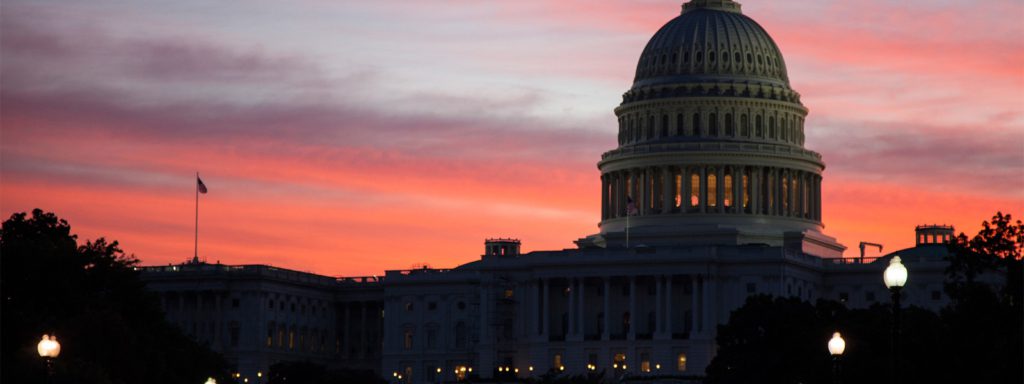As we head into September, Congress is still at a standstill on the fourth COVID-19 recovery package. Relief for charities and the communities we serve seems no closer than it was when the summer began. Unfortunately, not much has changed since I wrote the first version of this piece.
As we know, the House passed a large ($3 trillion) relief package in May, the opening move in what was hoped to be a timely and conclusive set of negotiations between the House and the Senate. The Senate held off from delivering its own bill (a much smaller $1 trillion) until the end of July. Major differences between the two bills center on, among other items, assistance for state and local governments whose budgets have been devastated by the virus, and the extension of the additional $600 weekly unemployment benefit enacted through the CARES Act last spring. To date, those differences and others have proven a constant stumbling block to a compromise. “Big bill” or “skinny bill”? The reality is that neither appears on the horizon.
The united voice of the charitable nonprofit community in the midst of this train wreck has been consistent and firm – best captured in this letter to policymakers. The unfortunate reality, however, is that to date, we have not been able to effectively use the urgency of the situation to drive a compromise in the midst of the partisan rancor. To be sure we keep trying, but this mess is far larger than us.
As we know, the President issued four executive actions that he suggests will ease some of the pain for those who have lost their additional unemployment benefits and may be on the edge of eviction from rented apartments or homes. The reality is that today, we do not know for certain whether these measures will deliver the full measure of relief they promised. And we do know that the states, which are to carry a significant portion of the emergency unemployment assistance addressed in one of these executive orders, do not have the funds to comply.
In short – while we can see the end of summer (and summer recess) coming, we cannot see a game-plan from Congressional leadership and the White House on how to move forward.
So where does this leave us? To be perfectly honest, I am not sure any of us know. It is possible that the President’s actions may have caused enough “fuzzing” in the system that the whole debate over the next COVID-19 package will be pushed later into September when Congress must return to address funding the government. That could be the next “forcing event” that pushes these issues forward.
In the meantime, we must keep the pressure on as best we can. Lawmakers must continue to hear from us to ensure that nonprofit priorities are included in the next relief package. Such priorities include emergency funding to ensure safe and fair participation in the 2020 election cycle and census process, and broadband expansion to ensure that households in all communities can fully participate in essential services. Furthermore, immediate action is required to ensure that forgivable loan assistance is accessible to all nonprofits as the loan provisions in the previous relief package imposed significant barriers that limited accessibility for smaller nonprofit organizations and excluded many mid-size and larger organizations entirely.
And, as if we needed one more issue to be legitimately worried about, the latest uncertainties regarding adequate funding of the US Postal Service have only complicated the conversation. Putting the critical role, the USPS will play in the November elections aside, we know that nonprofits are extraordinarily reliant upon the Postal Service to connect them to their donors, educate and engage their stakeholders, and communicate with their volunteers. This is particularly true of smaller nonprofits, many of which are serving Black, Native or communities of color disproportionately decimated by this virus. So, “there’s that.”
Stacey Abrams, in an article published earlier this summer, spoke of how insufficient it sometimes feels to say in response to the broken state of our nation, “you must vote.” But she goes on to write that systemic reform of the scope and scale we need in America right now almost always starts with the officials we place in power by way of our vote. So, wherever your political allegiances might lie, get yourself ready to engage the candidates. Use your voice to focus their attention on the needs of our sector and, most importantly, on the needs of those we serve. And while you are at it, tell them to make sure resources are available to make healthy, safe elections possible come November because no one, especially not in these times, should be confronted with making a choice between their constitutional right to vote and their personal safety.
As hard as it is to write, IS cannot yet offer you any clarity on where this will all land. What we can pledge is that we won’t give up the fight (and won’t let you do so either), and we will keep you posted on each significant turn it comes.



